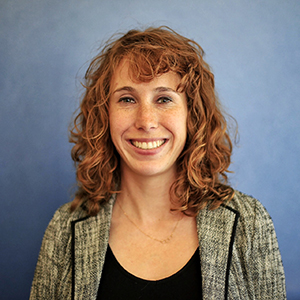At the recent Opportunity Finance Network annual conference in D.C., LISC and partners hosted a panel that dove into the ins and outs of underwriting Pay for Success transactions. Borrowing strategies from traditional debt financing, the panelists walked the audience through the special considerations that can make for a successful Pay For Success deal.
With 20 projects launched and an estimated 80 in the pipeline (including 3 LISC projects), bringing new investors to the Pay for Success (PFS) world is critical for it to reach a tipping point. A key component to this is investor education around the model, including considerations around project risks and mitigating factors. At Opportunity Finance Network’s CDFIs Invest Conference in Washington DC this September, LISC hosted a panel, along with Living Cities, Nonprofit Finance Fund and Reinvestment Fund, bringing together a range of community development financial institutions, banks, foundations and government entities to learn more about underwriting PFS transactions.
The panel began by applying Living Cities and Reinvestment Fund’s Four Ps of Pay for Success Underwriting Framework to the recently launched Salt Lake County project addressing the issues of homelessness and criminal justice reform. Both organizations were investors in that project. The Four Ps framework provides a parallel to the Five C’s of Credit in traditional debt financing. The Five C’s emerged as a method for lenders to assess both qualitative and quantitative factors of a borrower’s likelihood to repay a loan. The model focuses on a borrower’s history and track record of repaying debts (character); borrower’s ability to take on debt through financial and organizational strength (capacity); lender’s ability to secure loans against an asset (collateral); borrower’s skin in the game in the form of internal capital put towards a transaction, as well as any additional financing needed to make the project succeed (capital); and the overall structure and purpose of the transaction (conditions).
Unlike traditional community development debt vehicles that leverage the Five C’s model, PFS relies heavily on the alignment, flexibility and compatibility of project parties to work together to solve complex social issues. In the absence of collateral, the Living Cities and Reinvestment Fund’s Four P Framework provides a new way for lenders to assess the likelihood of getting paid back in a PFS transaction by assessing the strength of the Partnerships between the back-end payors, investors, transaction structurers, evaluators and service providers; the capability of the Program to deliver on successful outcomes; the capacity of the public sector, or other payer, to create the necessary Policy environment to support the project; and the Process by which project parties agree to work together pre- and post-project launch.
The session had participants apply the framework to sample transactions in child welfare and in youth development. Available here, we invite those unable to attend the panel to apply the Four P Framework to the sample exercises. Key questions to assess project risks and assign mitigating factors include:
Assessing Risk | Guiding Questions |
Partnership |
|
Program |
|
Policy |
|
Process |
|
The panel demonstrated the appetite of investors to learn more about the model, but also brought up a key a question: as PFS continues to grow, how do we structure transactions to incentivize new investors? The model still has a way to go before it reaches scale or standardization, but in this early stage education of investors is critical so transactions can appeal to a broader range of risk and reward profiles. Ultimately, this dialogue has the potential to unlock the capital needed to increase the number of launched transactions, and ultimately increase the number of individuals served.
 Anna Smukowski, Senior Director of Capital Programs, Enterprise Community Loan Fund
Anna Smukowski, Senior Director of Capital Programs, Enterprise Community Loan Fund
Anna Smukowski serves as ECLF’s senior director of capital programs, assisting ECLF’s capital and lending teams with capital raising and fund structuring. Prior to this position, she led LISC’s $200 million retail note offering, coordinated LISC investor relations and positioned LISC’s capital raising within ESG, impact and social bond frameworks. Anna also managed $50 million in LISC’s Paycheck Protection Program deployment and has structured and managed affordable-housing and economic-development funds as well as pay-for-success work through a Social Innovation Fund grant award. Anna is passionate about values-aligned investing from the individual to the institutional level and has worked on updating and implementing missionaligned investment policy statements at LISC and ECLF. Anna started her career as a strategy and operations consultant at Deloitte. Anna holds a bachelor of science degree from New York University Stern School of Business and an MBA from Columbia Business School.